45 Healthy Pumpkin Recipes that are NOT Pie
Pumpkin recipes for pie and coffee drinks seem to abound this season. Warming pumpkin spice is one of the prime comforts of this season. But pumpkin is so much more than spicy pie. Pumpkin is one of the more nutritious vegetables available in the fall. Rich in vitamins, minerals, and healthy antioxidants, pumpkin can be a cornerstone in your healthy harvest menus. Pumpkin is also inexpensive at this time of year. If you grow your own or have neighbors that do, pumpkins and winter squash are almost free.
I woke up on September 4th to sub-freezing temperatures for the first time since June. The squash vines were blackened and limp. If the temperature had been just one degree colder we would have lost our whole squash harvest to freezing. But instead of lamenting our lost summer, we got to work to salvage what we could of the heat-loving garden plants.
We harvested 28 larger pumpkins and winter squash plus myriad of immature pumpkins, zucchini, and winter squash. It was the biggest haul of squashes we’ve had so far here in zone 3. Thanks garden.
With the windfall of winter squash I need more recipes than pumpkin spice latte and pumpkin pie. So I pulled together a few healthier versions of the best pumpkin recipes I could find. You can use this list, like I will, for inspiration and ideas as you look at the basket of pumpkins and winter squash from your own garden or from the farmer’s market.
Once you see how healthy pumpkins and winter squash actually are, you’ll be looking for a few more to store for the winter.
How to store pumpkins and winter squash
Winter squash and pumpkins can be stored in a cooler area (under 50°F) for 3 to 5 months. Squash with higher water content will have a shorter shelf life. Densely fleshed pie pumpkins often stay good in cold storage till March. Store in a single layer with newspapers. Wash off any dirt. Wipe the hard outer shell of squash with a sanitizing wipe (1/4 cup vinegar, 12 drops lemon essential oil) to remove any surface bacteria.
Once cut open pumpkins should be used up within a week. Larger pumpkins can be baked and then pureed. The puree can be frozen.
How to dehydrate pumpkin
Pumpkin can be dried in a dehydrator. It can be powdered and added to baking as a gluten-free flour. It can be used as a thickener in gravy or stock. 10 pounds of pumpkin or winter squash will make ¾ pound of dried squash or pumpkin flour. Peel the pumpkin. Remove the seeds and pulp. Blanch pieces of squash for 4 minutes. Dry on dehydrator trays or in the oven.
How to can pumpkin for food storage
Pumpkin or winter squash are low acid vegetables and can be canned in a pressure canner at 10 pounds pressure. Only cubed pumpkin should be processed at home. Pumpkin puree is not considered safe for home canning. Allow two pounds of pumpkin per quart jar.
Process cubed pumpkin or winter squash at 10 lbs pressure for 90 minutes for quarts or 55 minutes for pints. If your altitude is above 1000 feet use 15 lbs pressure.

A few healthy pumpkin facts
- 1 cup of pumpkin has more than 200% of the recommended daily vitamin A allowance, in the form of b-carotene. In fact pumpkins contain more b-carotene than carrots.
- Pumpkin pulp and pumpkin seeds are a rich source of linoleic acid and other antioxidants
- Pumpkin aids in the removal of heavy metals from the body
- Pumpkins are rich in potassium, iron, magnesium, phosphorous, and pectin.
- Pumpkin pulp contains 1.5% protein
- Pumpkin pulp is rich in lutein and zeaxanthin, two essential antioxidants for eye health
- Pumpkin contains vitamins A, B complex, C, and E
- Pumpkin is one of the best anti-aging, functional foods because of the antioxidants, vitamins and minerals contained in the plant.
- 400 grams of pumpkin seeds contain enough protein for the needs of an adult
- Pumpkin promotes angiogenesis and helps prevent several types of cancers
- Consumption of pumpkin, which is high in fibre and pectin, promotes healthy digestion
- Consumption of pumpkin reduces cholesterol and protects against heart disease
- Pumpkin energetics: cooling and moistening
- Consumption of pumpkin helps to bring blood glucose into the normal range
- Pumpkins also help with weight loss
- In herbal medicine, pumpkin seeds are used as a wormer and to remove tape worms from the body
- Pumpkin seeds reduce the risk of prostate cancer
- Pumpkins and pumpkin seeds have anti-inflammatory properties and ease arthritis
- Pumpkins promote healthy blood pressure
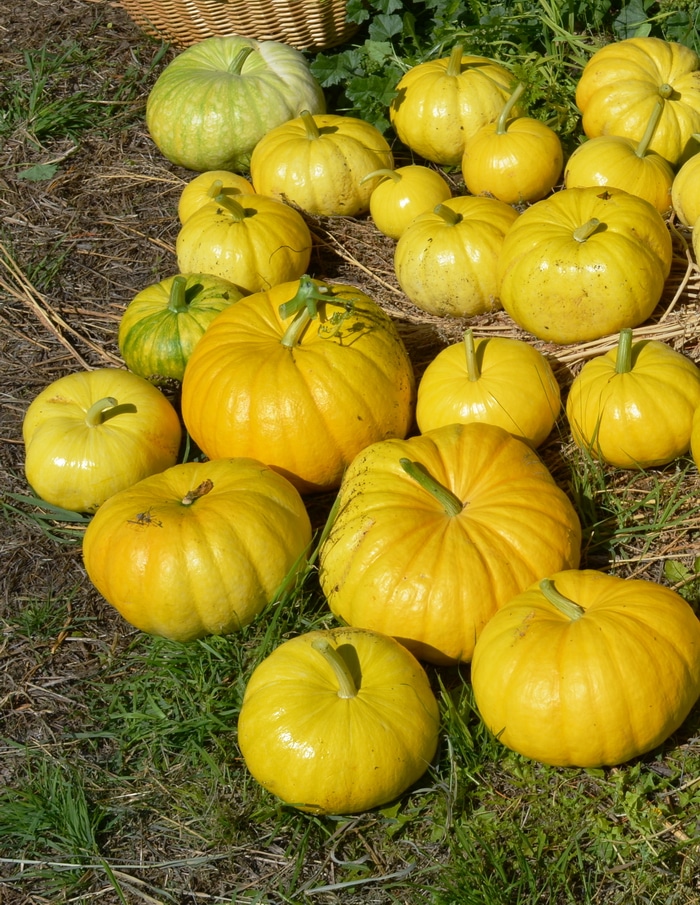
45 Pumpkin Recipes that are NOT Pumpkin Pie
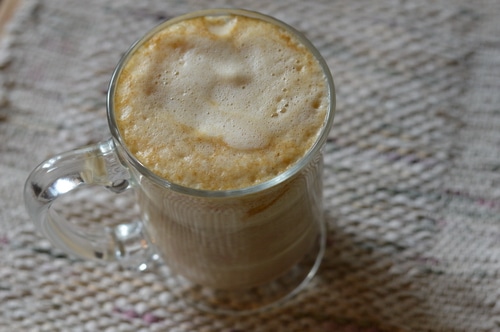
Pumpkin recipes for beverages

Main course pumpkin recipes
Lamb with tahini squash au gratin
Low carb pumpkin or squash noodles
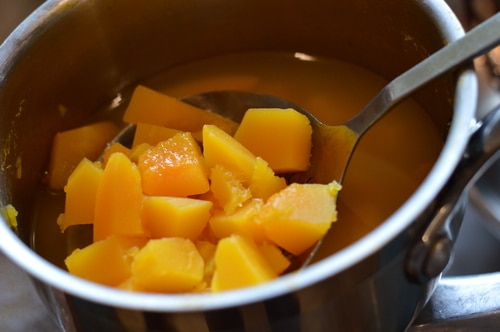
Side dish pumpkin recipes
Arugula salad with roasted squash and candied pecans
Gluten-free pumpkin corn bread
Appetizer pumpkin recipes
Pumpkin spice energy balls with maca
Condiments that feature pumpkins
Fermented pumpkin with cardamom
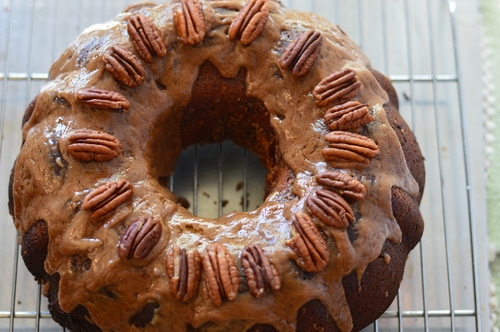
Pumpkin recipes for breakfast
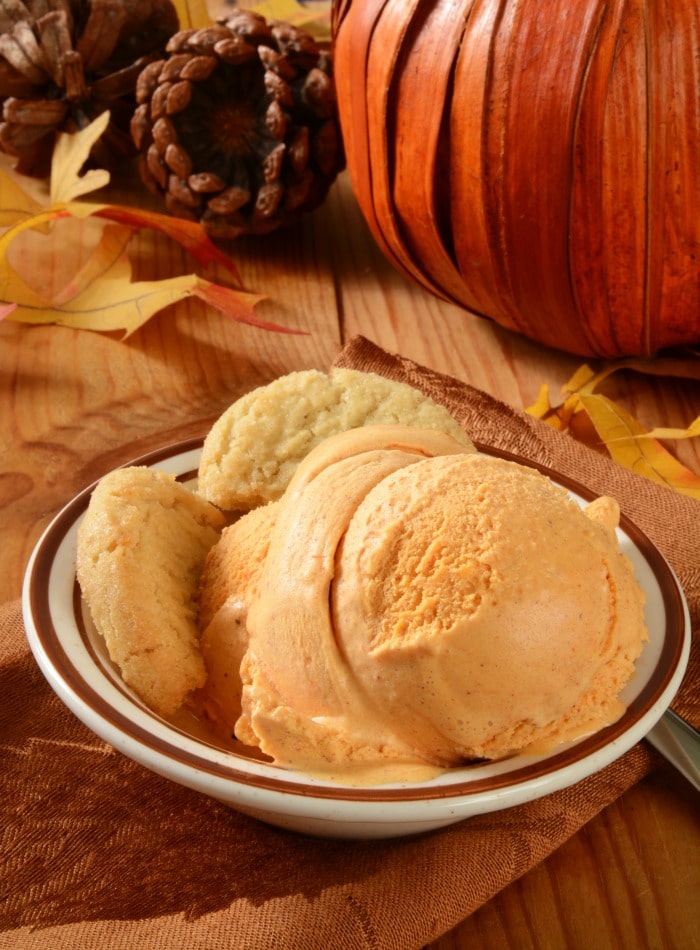
Pumpkin desserts
Pumpkin halwa is a sweet, rich confection that is popular in the Asia
Gluten-free pumpkin coconut macaroons
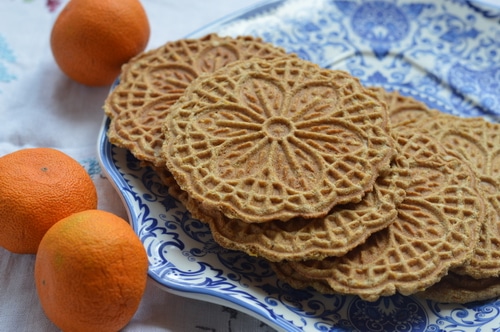
No-bake gluten-free pumpkin cheese cake
Baked gluten-free pumpkin cheese cake
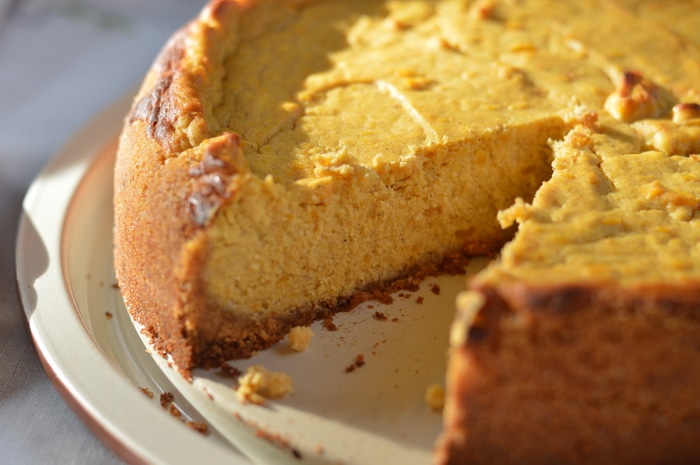





What do we do with the immature squashes? They do make good decorations, but are they edible?
Yes, Robin, they are edible but they may not last in storage. The baby ones that still have a soft skin can be used like you’d use zucchini. They can be sliced and grilled. Cubed and stir fried. Grated and added to potato pancakes or hash. There is no need to peel them. No need to remove their pulp or seeds.
They will have immature seeds inside, but the pulp isn’t stringy. I put them in the oven on a baking sheet, whole, and bake them for an hour to bring out the sugars then top and tail them, cut them into cubes and put them in the slow cooker (if any of the seeds are hard, remove them at this stage). Let them simmer for an hour or two. Then puree them with my stick blender, seeds and all. If the seeds are soft they don’t present a hazard to the stick blender. At this stage you have purreed squash that you can package and put in the freezer for later. Use this in any of the pumpkin recipes in this post. The color is paler than ripe pumpkin but the flavor is excellent.
To make pumpkin soup with this, I add 1 can of coconut cream or coconut milk, 1 teaspoon cinnamon and turmeric, 1/2 teaspoon ginger, cardamom, and nutmeg, 1/4 teaspoon cayenne pepper and 1 teaspoon of himalayan salt. Serve as warm for pumpkin soup.